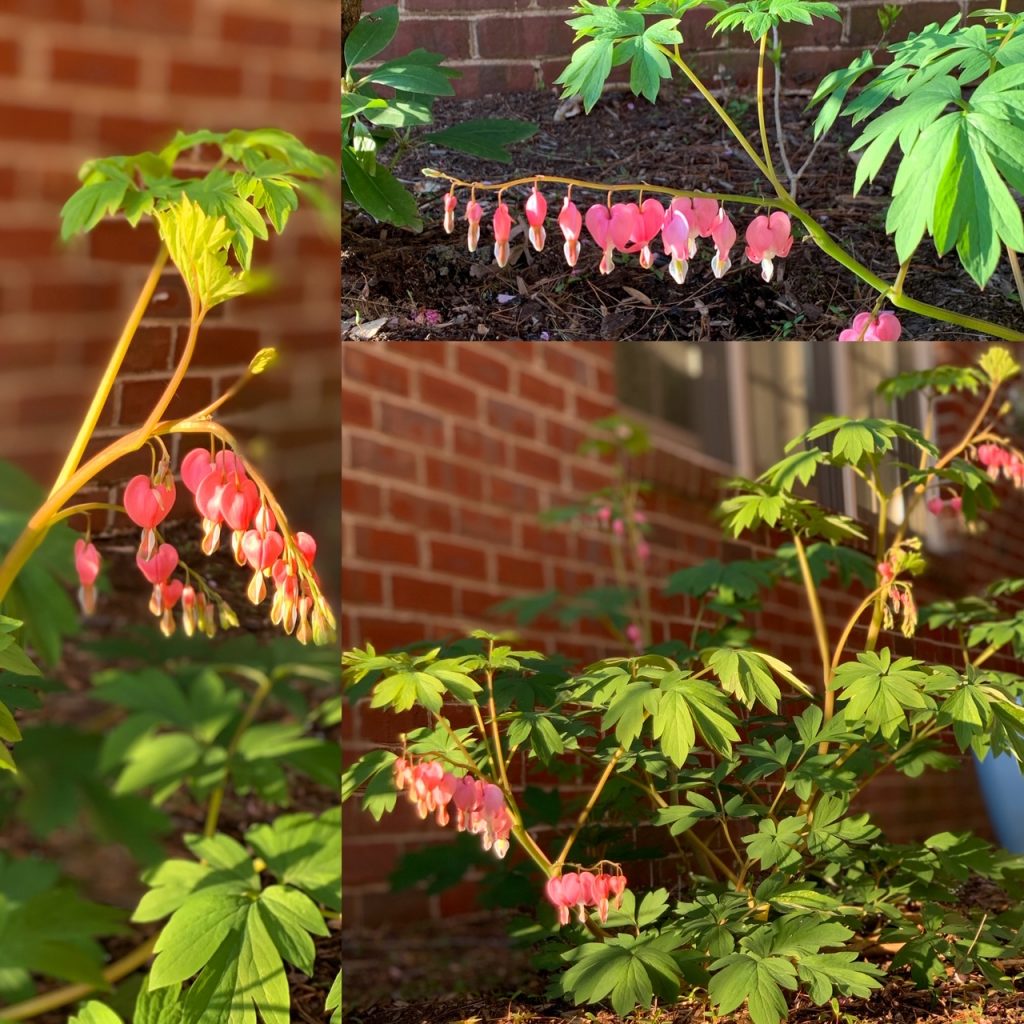Never before have I been more comforted by the proof of spring’s coming outside my window. I know I’ve written about it adnoseum. I guess it’s because I am always surprised by its transforming on the landscape where I now live. On the prairie there were trees—one here and there. They would bloom fresh green in spring and there would be spots of green when you’d look out, rather than naked branches to see through. And, of course, the fields would slowly change shades of brown—dried, tired soil to fresh turned-over, black-colored humus. Even when I moved out east as an adult, I didn’t have the view of spring’s power until moving to Appalachia south. In Maryland, we lived in the city and were always level with the landscape. In North Carolina, I was surrounded by long leaf pines. But here in the mountain south? Ahh, the glory of the season’s commitment to bear itself new and fresh once again never becomes dull.
Especially this year. Outside my window all the fruit trees (that don’t actually produce fruit) that last week were donning their wedding-celebration blossoms are now on the other side of springtime bloom. There are the limey-colored, lace-like leaves decorating all the trees, standing as a witness to the mountains rising up behind them, shades of clay-dirt brown, waiting patiently their turn. I’ve no doubt by this time next week, those mountains will be lime green, too.
Over the past several weeks, I’ve found myself looking at the budding trees and transforming valley below, and wondering: Did the coming of spring bring hope to folks living through hardships of our nation’s past? Did they look at the flowering trees and think it odd something so beautiful would still decide to break forth, though all around it was nothing but death, destruction, and chaos?
Before going any further, let me say, I hesitate to compare our present moment with those most horrible times of our country’s (or world’s) past. As one of my professors wrote to me weeks ago as COVID-19 was in its early stages of breaking loose upon America, “These are really unusual times… for all of us,” she wrote. And then, “Not for our parents and grandparents. My mother knew much worse growing up in occupied Belgium… [and also] the Great Depression.”
Her words are what set me to looking out the window and imagining the folks of hard-times past. We only know what we know. When I was a child, I had the perspective of a child. Having a playdate canceled was sometimes the end of me. Now I am an adult. Still, I cannot help but have my limited perspective.
I’ve been reading C.S. Lewis’s book, An Experiment in Criticism. In it, Lewis argues the difference between worthy literary criticism and that which is unworthy, is really a difference between “literary” and “unliterary” readers. Unliterary readers, says Lewis, are those who come at any work for the purpose of “using or consuming” it. Literary readers, on the other hand, come to a work in order to “receive it.”
Lewis explains his thesis with multiple illustrations. Of these, I’ve found his example of looking at a work of art to be most powerful. We all begin, says Lewis, by admiring a work of art for the way it speaks to us:
“‘That’s the loveliest face I ever saw,’ ‘Notice the old man’s Bible on the table,’ or ‘What a beautiful old house!’ The emphasis is on what may be called the narrative qualities of the picture. Line or colour or composition are hardly mentioned….This attitude, which was once my own, might almost be defined as ‘using’ pictures…as a self-starter for certain imaginative and emotional activities of your own. In other words, you ‘do things with it.’” –C.S. Lewis (16-17)
This is precisely why spring has comforted so much this year. I’ve been using spring’s evidences and emerging outside my windows to construct a language; to imagine a story for bringing me peace in these troubled times. Is there something flawed in this? I don’t think so. Looking out at my trees and imagining the lives of people gone before me, how they maybe found some solace in the same blooming of spring, has given me a kind of bolstering and renewed spirit to carry on in hope.
And yet, after reading Lewis’ book, I can’t help but wonder, how I might move from using the coming of spring for my own comforted imaginings, to receiving it, instead.
Lewis goes on:
“The first demand any work of any art makes upon us is surrender. Look. Listen. Receive. Get yourself out of the way…. I do not mean by this that the right spectator is passive. His also is an imaginative activity; but an obedient one.” (emphasis mine)
This week is Holy Week for Christians around the world. A week for remembering and following Jesus in the final days leading to his crucifixion, death and resurrection. Normally this remembering would be done together: waving palms, singing Hosanna!, celebrating the last Passover meal, the stations of the cross, the Good Friday service, hearing “It is Finished.” The collective darkness. The slam of the Book.
How strange it will be to walk through this week not physically together.
Still, it is a week to be received. And at its end is still an empty tomb in a spring garden. With the Gardener there waiting to be received, too.
Grace and Peace to each of you this Holy Week. May, each one of us discover what it is to truly receive the Beauty and Hope this week is offering.


Recent Comments